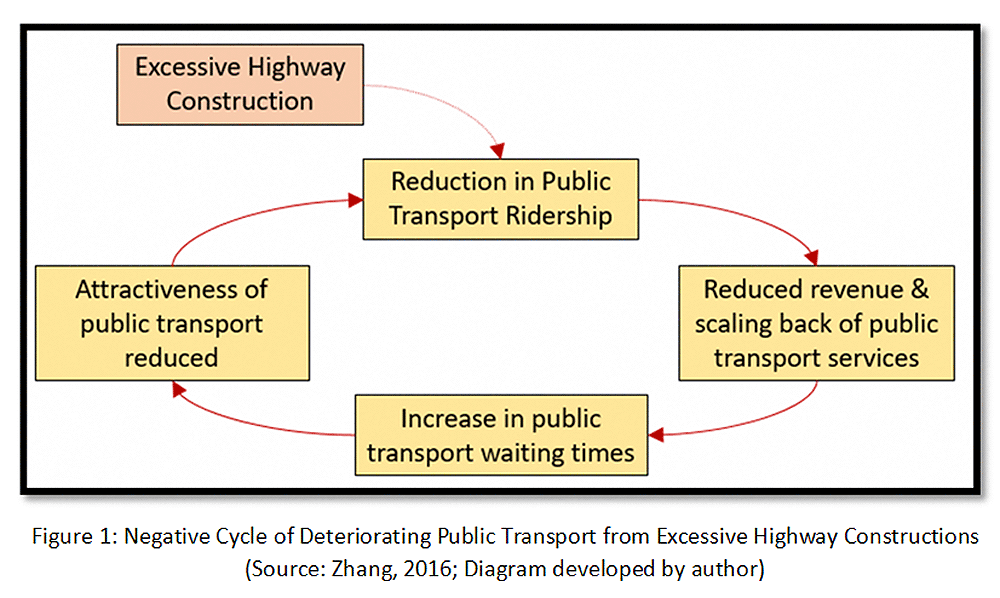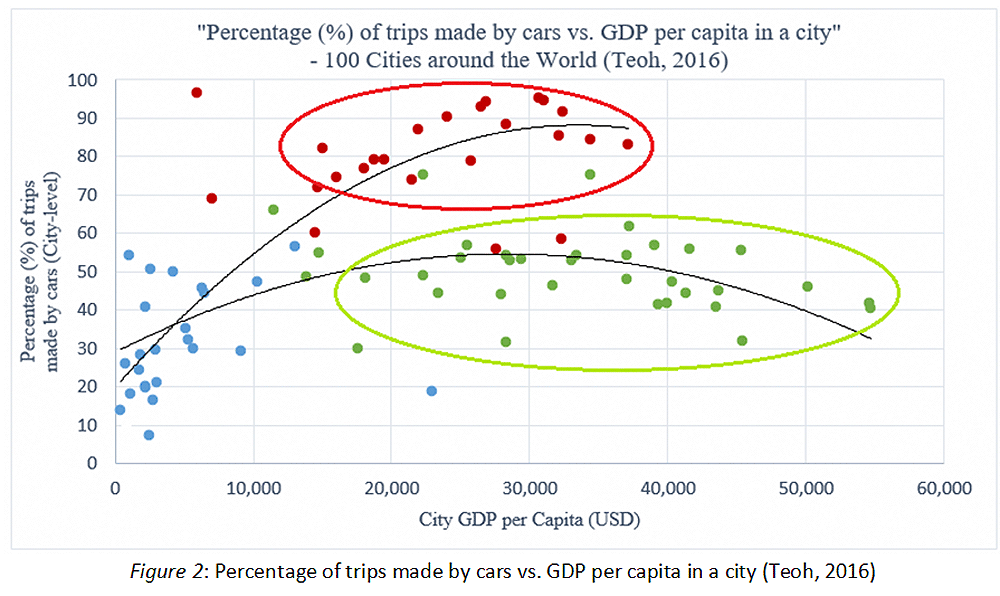The link between transport policy and social equity is often an important issue left undiscussed in the developing world. This article attempts to provide a fresh perspective, analysing the element of social equity in the proposed Penang Transport Master Plan (PTMP).
As I am a DAP member as pointed out correctly by certain authors, I would like to provide alternate views within the party as our constructive debate on the PTMP. I would like to stress the importance of having constructive debates for the better of Penangites. This also shows that Penang is walking the talk towards transforming into a progressive society that formulate effective policies based on facts and empirical studies.
Excessive highways violate social equity
It is highly crucial for the Penang state government to meet the mobility needs of all Penangites, which involves placing equal emphasis on improving all transportation modes. However, as proposed in the PTMP, the automobile is further prioritised despite the state already having a very high amount of freeways on a per capita basis.
It is unanimously proven by transport research papers all around the world that a high accommodation in the car will inevitably lead to the deterioration of modal alternatives such as public transport, walking and cycling (Litman, 2013).
For example, since an excessive highway construction is expected to reduce public transport ridership (explained in my third article), it will lead to a reduced revenue and the scaling back of services. This subsequently increases public transport waiting times and further reduce its attractiveness and ridership, leading to a negative cycle as shown in figure 1.

Unavoidably, this implies that Penangites will have no choice but to buy a car in order to travel within Penang in the most convenient manner. Since public transport is more affordable and significantly cheaper compared to paying for a car mortgage and its operational costs, an excessive highway construction is expected to unfairly impact low-income groups the hardest (Bouton et al., 2015).
Without an inclusive transport system in the Penang Transport Master Plan (PTMP), this will lead to social exclusion for the poor, further limiting their total mobility and chances of climbing up the social ladder.
As a result of a poor public transport service and the additional time wasted from long public transport journeys, people without car access, as well as the poorest in society will be restricted from having equal opportunities. For instance, rather than using their time productively, their access to basic necessities such as employment opportunities, education and healthcare will be significantly limited due to inconvenience.
Therefore, this section leaves an open question for the public to make an appropriate judgement. Is the excessive highway constructions proposed by the PTMP beneficial to everyone, or does it only benefit social elites with car ownership?
Boosting the Penang economy through road constructions?
While there have been arguments that these new highways proposed by the PTMP are needed to boost economic development in Penang, quantitative evidence drawn from cities around the world fails to support this hypothesis.
Using the global cities database with 100 different cities around the world, figure 2 below shows the degree of car use in a city and its respective GDP per capita. It is very clear that cities prioritising in mass transit systems with lower car use (green circle - mainly European cities) on average have a higher GDP per capita in the long term, when compared to cities with high car use and freeway supply (red circle - mainly North American cities).

This can potentially be explained as traffic congestion in a city leads to a decrease in economic productivity and the deterioration of social welfare. Although the Penang state government will once again predictably point out that these highways are needed to solve traffic congestion, my first article explains why urban transport woes such as parking limitation and traffic congestion will remain.
Therefore, the economic argument in favour of excessive highway construction in the PTMP is again proven unjustified and extremely misleading to the general public. The key point is not for Penang to remain in status quo but to invest on the right transport infrastructure such as urban rail systems instead of highways, which the advantage of urban rail is explained in my second article.
The need for appropriate stakeholder engagement
Governments in the developed world are mandated by law to conduct an appropriate and high-level stakeholder engagement for any large projects proposed. Stakeholder engagement is an interactive process that aims to improve the quality of decision making, generate better solutions and improve the local quality of life for all segments of society. (Jones, 2015)
Although it can be debated that the Penang state government and its project delivery partners did indeed conduct sessions to address NGO concerns, such consultations unfortunately are not up to par. For example, a high quality stakeholder engagement involves a two-way communication, together with a clear selection criteria and justification for every decisions made at every stage of the project.
Since the PTMP will be the Penang state government’s biggest project since coming into power in 2008, it is definitely disturbing that these fresh concerns raised in my previous articles were swept under the carpet.
Stakeholder engagements and disagreements in any project is a normal process. The Penang state government needs to understand that speaking out against the PTMP is not a vote against the DAP. However, failing to conduct a high quality stakeholder engagement will be regarded as clear negligence.
The appropriate steps and methodology used by developed countries for conducting a high quality stakeholder engagement can be found in this report. Perhaps this stakeholder engagement framework and methodology can be temporary adopted in the interim if the Penang state government is committed towards a competent, accountable and transparent (CAT) administration similar to governments in the developed country.
References
Bouton et al (2015) Urban mobility at a tipping point. McKinsey & Company [Online] Available here.
Jones, P (2015) Stakeholder Engagement in Transport Policy Development & Delivery. T6 - Transport Policy, MSc Transport Studies. Centre for Transport Studies, Imperial College London & University College London.
Litman, T (2013) Parking Management - Strategies, Evaluation and Planning. Victoria Transport Policy Institute. [Online] Available here.
Zhang, F et al (2016) The Downs-Thompson paradox with imperfect mode substitutes and alternative transit administration regimes. Transportation Research Part B: Methodological. 86104-127
ROGER TEOH is a postgraduate student studying for a PhD at the Centre for Transport Studies, Imperial College London.

